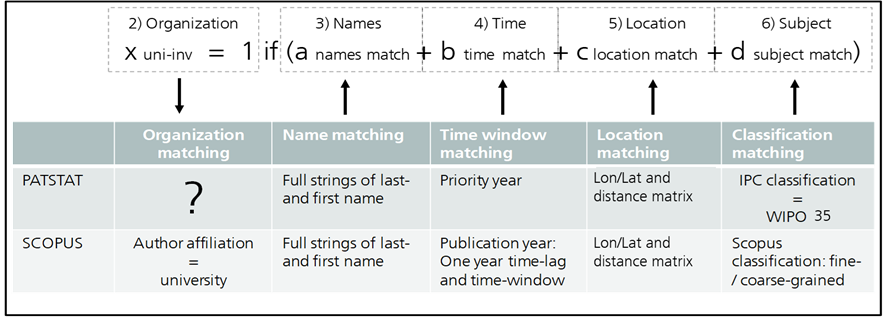Academic patents as a new indicator of technology transfer from universities and public research organizations
Universities and public research organizations (PROs) are a central source of innovation in Europe. Translating the knowledge generated at universities and PROs into market applications, however, often proves challenging. A key instrument for knowledge and technology transfer from research to industry is academic patents. Fraunhofer ISI has developed a new method to make these academic patents measurable, enabling a better understanding of technology transfer from universities and PROs.
Overview
Technology transfer from universities to industry has been a central topic in innovation research for many years. On the one hand, it boosts the technological competitiveness of companies and nations. On the other, successful knowledge transfer can generate additional funds beyond public funding, which can then be reinvested to generate new insights. Technology transfer from universities and research organizations (PROs) takes place in various ways, for example through licensing agreements with companies, contract research, joint publications, informal channels and spin-offs.
Alongside these channels, patent applications are considered an important instrument of technology transfer. The challenge in statistically capturing these patents is that a large share of applications stemming from universities and PROs are filed by external actors, often companies in the context of contract research, but also individuals, while the university staff involved in the invention are listed only as inventors. Focusing solely on patents filed by universities and PROs leads to a significant underestimation of their innovative contribution.
To address this, Fraunhofer ISI has developed a method to better capture the contribution of universities and PROs to the innovation system in the 39 member states of the European Patent Convention (EPC).In recent years, we have focused on identifying academic patents not only those filed directly by universities and public research organizations, but also those resulting from the cooperation with at least one university- or PRO-affiliated inventor (university-invented patents or indirect filings). The method enables a more accurate measure of the innovation output of all European universities and PROs, both at the level of individual organizations and in aggregate at the country and regional levels within Europe.
Methodology
The main methodological challenge was to identify individual university affiliates as inventors on patent applications in a large-scale and an automated manner. Employee lists from universities and PROs are not publicly available, therefore, we initially used Scopus, a database on scientific publications, to identify all authors of academic papers from universities and PROs from 2000 onward. This yielded a database of researchers affiliated with universities and PROs. In a subsequent step, we cross-referenced these data with inventor names from the PATSTAT patent database, allowing us to identify patented inventions involving at least one university-affiliated individual.
However, this approach carries the risk of incorrect matches due to name similarities, also referred to as the homonym problem. Additional selection criteria were therefore required to significantly increase the likelihood of correct matches. These criteria include a two-year time window between a patent and a scientific publication, the geographic proximity of the inventor’s address to the university location, and alignment between the technology fields of the patent application and the scientific publications.

Findings
Our analyses, conducted together with the European Patent Office (EPO), show that the share of university-invented applications among European patent filings has steadily increased over recent decades. Currently, academic patents from universities at the EPO amount to roughly 7,000 applications per year, accounting for 10% of all applications from EPC member states. In total, more than 1,200 European universities filed patents at the EPO between 2000 and 2022. For public research organizations, the number of applications during the same period totals 63,000, with just under 4,000 patents filed at the EPO last year. This represents approximately 6% of all applications submitted to the EPO by European applicants.
Overall, this new method for identifying academic patents reveals over 50% more patent applications attributable to European universities. The contribution of universities to technology transfer—and thus to the innovation system—has therefore been substantially underestimated to date. A similar, though less pronounced, pattern emerges for PROs: a little over 80% of their patent applications are filed directly by the PROs themselves, implying that about 20% of patent filings involving PROs have been overlooked when only considering those submitted directly by the PRO.
Additional results and analyses can be found in the joint publications of Fraunhofer ISI and the EPO.
Press Release and Publications
- Public research organisations behind 63 000 inventions across Europe in the past two decades (Press Release of the European Patent Office)
- The role of European public research in patenting and innovation – An in-depth analysis of the contributions of European public research organisations and research hospitals to patenting activity at the EPO
- The role of European universities in patenting and innovation – A study of academic inventions at the EPO